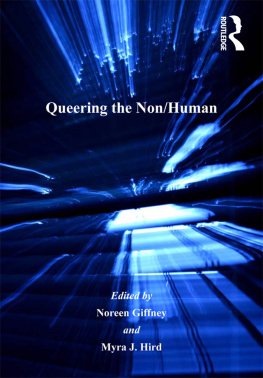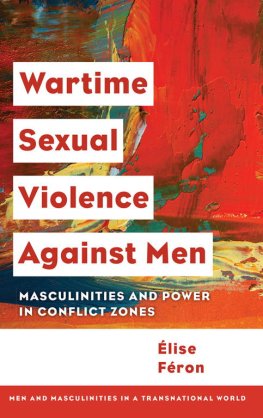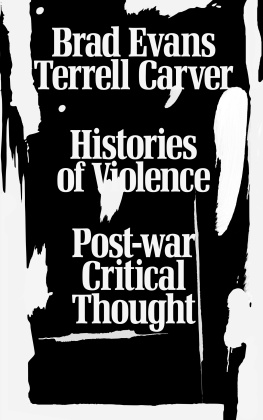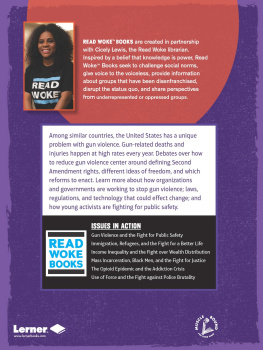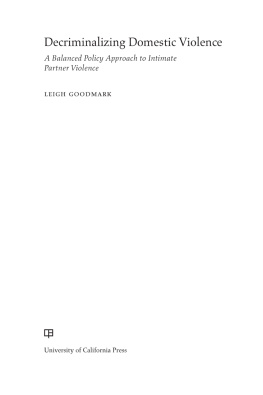ENGENDERING VIOLENCE
Engendering Violence
Heterosexual interpersonal violence from childhood to adulthood
MYRA J. HIRD
Queens University, Belfast
First published 2002 by Ashgate Publishing
Published 2017 by Routledge
2 Park Square, Milton Park, Abingdon, Oxon OX14 4RN
711 Third Avenue, New York, NY 10017, USA
Routledge is an imprint of the Taylor & Francis Group, an informa business
Copyright Myra J. Hird 2002
The author has asserted her moral right under the Copyright, Designs and Patents Act, 1988, to be identified as the author of this work.
All rights reserved. No part of this book may be reprinted or reproduced or utilised in any form or by any electronic, mechanical, or other means, now known or hereafter invented, including photocopying and recording, or in any information storage or retrieval system, without permission in writing from the publishers.
Notice:
Product or corporate names may be trademarks or registered trademarks, and are used only for identification and explanation without intent to infringe.
British Library Cataloguing in Publication Data
Hird, Myra J.
Engendering violence: heterosexual interpersonal violence from childhood to adulthood
1. Violence 2. Heterosexuals 3. Interpersonal conflict
I. Title
305.3
Library of Congress Control Number: 2001099949
ISBN 13: 978-0-7546-0916-2 (hbk)
Contents
Several people have supported me, in many different ways, during the writing of this book. I thank Kimberly Abshoff, Maureen Baker, Tarani Chandola, Nigel Clark, Chris Davies, Sylvia Easton, Liz Frazer, Jenz Germon, Paula Gunn, Zubaida Haque, Judy Haschenburger, Janet Hird, Roger Hood, Sue Jackson, Stevi Jackson, Allison Kirkman, Jane Kubke, Jason Mabbett, Henrietta Moore, Mike Noble, Terry ONeill, Anna Paris, George Pavlich, Sasha Roseneil, Chris Rovee, Liz Stanley, Reece Walters and Lynda Williams.
I also thank Katherine Hodkinson for her kind encouragement and support during the publishing process.
I dedicate this book to my parents, Barbara and Brian Hird, and to my best friend Anth Krivan.
Personal Safety and Public Discourses of Gender Difference
Messages about personal safety, from the protection of property to dating protocol, pervade our everyday lives. These messages usually offer advice about protecting ourselves from strangers. Women, in particular, are expected to prevent their own victimization by avoiding certain places, walking in the company of others, predicting when peoples tempers are getting out of hand and generally monitoring danger. Mens lives, on the other hand, are not as restricted.1 Indeed, men often accompany women home at night because it is assumed that men protect women from harm. Boys, also, do not typically learn the same number of personal safety strategies as girls and are also allowed to go out at night more often and to more places than girls. Yet the most likely victims of assaults by strangers are young men.2
From a sociological perspective, public discourses about personal safety are interesting because they contradict how males and females actually experience violence in their daily lives. An apparently gender-neutral discourse reflects, in fact, the experience of heterosexual masculinity and a particular understanding of danger, harm and violence. This is the reason that personal safety discourse remains largely silent about females most likely assailants: male acquaintances, male friends, male parents, male siblings, boyfriends and male spouses.3 The following narrative inquires into the subject of heterosexual interpersonal violence. This analysis takes as its starting point the contradiction between personal safety discourses and womens and mens experiences of interpersonal violence, which by far accounts for the majority of societys everyday violence. In this analysis I will extend an existing critical discourse reassessing how, theoretically and empirically, gender and heterosexual interpersonal violence intersect.
In contemplating this map, I initially want to draw attention to three signposts on the interpersonal violence landscape: gender, space and relationship. First, contrary to movies such as Fatal Attraction and Disclosure, most violence (whether intimate or stranger-to-stranger) is committed by males. This does not mean that males as a group condone violence. It is to say that statistics consistently reveal that men commit the majority of physical and sexual assaults, and homicides. Men are also responsible for the majority of violence towards women. In the United States, the assault of women by their (ex)partners is the second highest form of serious injury after male to male assault. Interpersonal violence against women has reached such epidemic proportions in the United States that Surgeon General Everett Koop proclaimed domestic violence to be the number one health problem for American women (Schenck, 1992). The National Clearinghouse of the Defense of Battered Women estimates an incidence of domestic assault is reported every fifteen seconds in the United States (Spaid, 1993) and some researchers in the area of wife assault have coined the phrase a marriage license is a hitting license (Gelles and Straus, 1988). More than a million women in the United States seek medical attention each year for injuries sustained from (ex)husbands, (ex)partners and (ex)lovers. Surgeon General Antonia Novella claims that domestic violence causes more injuries to women than the collective injuries sustained from rapes, muggings and car accidents (Spaid, 1993). Yet the Federal Bureau of Investigation reports that wife battering is the most underreported crime in America (Wenzel, 1993).
Second, contrary to everyday assumptions, males are more likely to be assaulted in public whilst females are more vulnerable to violence in their own homes. For example, statistics for England and Wales show that men are more likely to be victims of assault outdoors and women are most likely to be attacked in their own homes or the home of their attacker (Government Statistical Service, 1994). In Canada in 1994, approximately forty-nine percent of homicides, sixty-one percent of sexual assaults and forty-nine percent of physical assaults occurred in private residences (Statistics Canada, 1995). Most murders (fifty-seven percent) in Australia in 1995 also took place in private dwellings. Assault is the largest category of offenses against the person in Australia and they most frequently occurred in private dwellings. In 1995 New Zealand (1996) statistics recorded that approximately fifty-two percent of indecent assaults, seventy seven percent of coercive sexual relations and sixty percent of sexual violation occurred within the home.
Finally, the relationship between perpetrator and victim is also important. Data from the United States, the United Kingdom, Canada, Australia and New Zealand all confirm that heterosexual interpersonal violence, whether homicide, sexual assault or physical assault, is largely committed by persons known to the victim. Moreover, most offenses are committed in circumstances of interpersonal conflict.
Emergent Themes
Gender and Difference
This book coincides with a major theoretical shift in gender and interpersonal violence theories. Coming to terms with the complexities of patriarchy, gender relations, sexuality, subjectivity, colonialism and globalization has prompted a challenge to traditional conceptualizations of the relationship between gender and interpersonal violence. This past decade in particular has produced a proliferation of theories on subjectivity and gender relations, work taken up by a number of feminist scholars (see Flax, 1987; Butler, 1990; Haraway 1990; Hooks, 1990; Nicholson, 1990; Yeatman, 1990; Fraser and Nicholson, 1994). More recently, under the rubric of new sociology of gender theories (Dobash, Dobash and Noaks, 1995), a combination of feminist, poststructural and postmodern theory is attempting to deconstruct these concepts by calling attention to their essentialist girding.4 Poststructural and postmodern theories of gender radically call into question the notion of a pre-social (sexed) body, arguing instead that bodies are configured through social, political and cultural discourses. These theories posit an historical and changeable body, on which all possible configurations of power and signification are inscribed.



